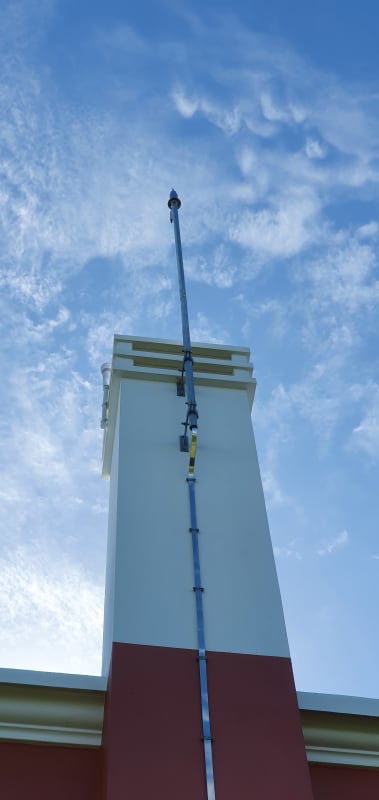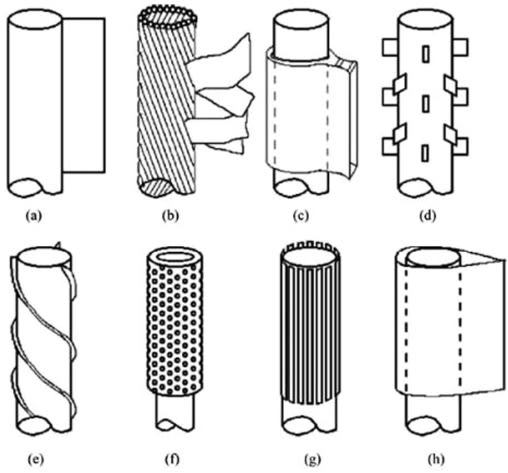psychedomination
Structural
Hi there,
I have a project, where the client recently erected a lightning rod to his chimney and mentioned that even in low winds it was making a loud rattling noise. He wanted to check if it was structurally sound.
The rod is connected to the chimney (hollow CMU block construction), with two 3/8” wedge anchors embedded 1.5” into the wall. Assuming confast, which have a pull out capacity of 5.4kN ea.
(mast specifications - note the weight is incorrect on this I believe it is supposed to be 20070 g). I’m not sure if the 1 ½” diameter is inner or outer?
specification for anchorage to wall
I checked the wind load acting on the pole and in a hurricane it would have about 3.6 kPa, which results in a wind force of 0.6kN and a moment of 1.2kNm.
I did a check of the section properties using an online calculator and if I did this right seems that the mast tube has a :
Second moment of area value of 33523 mm4 and section modulus of 1640.46mm3.
Assuming the grade of steel is 275MPa, this would have a resisting moment of only 0.45kNm, which isn’t enough and would have a deflection at the tip of 583mm, which would be too large.
Are there any simple ways to stabilize something like this in high winds? Anchor points would most likely need to be in the chimney,
Any help would be appreciated.
I suspect that the rattling noise is probably just the copper line moving inside the pipe but best to address any structural issues if there are any.
The pole is 4m tall (from supports) with an apex of about 12m from the ground.

I have a project, where the client recently erected a lightning rod to his chimney and mentioned that even in low winds it was making a loud rattling noise. He wanted to check if it was structurally sound.
The rod is connected to the chimney (hollow CMU block construction), with two 3/8” wedge anchors embedded 1.5” into the wall. Assuming confast, which have a pull out capacity of 5.4kN ea.
(mast specifications - note the weight is incorrect on this I believe it is supposed to be 20070 g). I’m not sure if the 1 ½” diameter is inner or outer?
specification for anchorage to wall
I checked the wind load acting on the pole and in a hurricane it would have about 3.6 kPa, which results in a wind force of 0.6kN and a moment of 1.2kNm.
I did a check of the section properties using an online calculator and if I did this right seems that the mast tube has a :
Second moment of area value of 33523 mm4 and section modulus of 1640.46mm3.
Assuming the grade of steel is 275MPa, this would have a resisting moment of only 0.45kNm, which isn’t enough and would have a deflection at the tip of 583mm, which would be too large.
Are there any simple ways to stabilize something like this in high winds? Anchor points would most likely need to be in the chimney,
Any help would be appreciated.
I suspect that the rattling noise is probably just the copper line moving inside the pipe but best to address any structural issues if there are any.
The pole is 4m tall (from supports) with an apex of about 12m from the ground.


